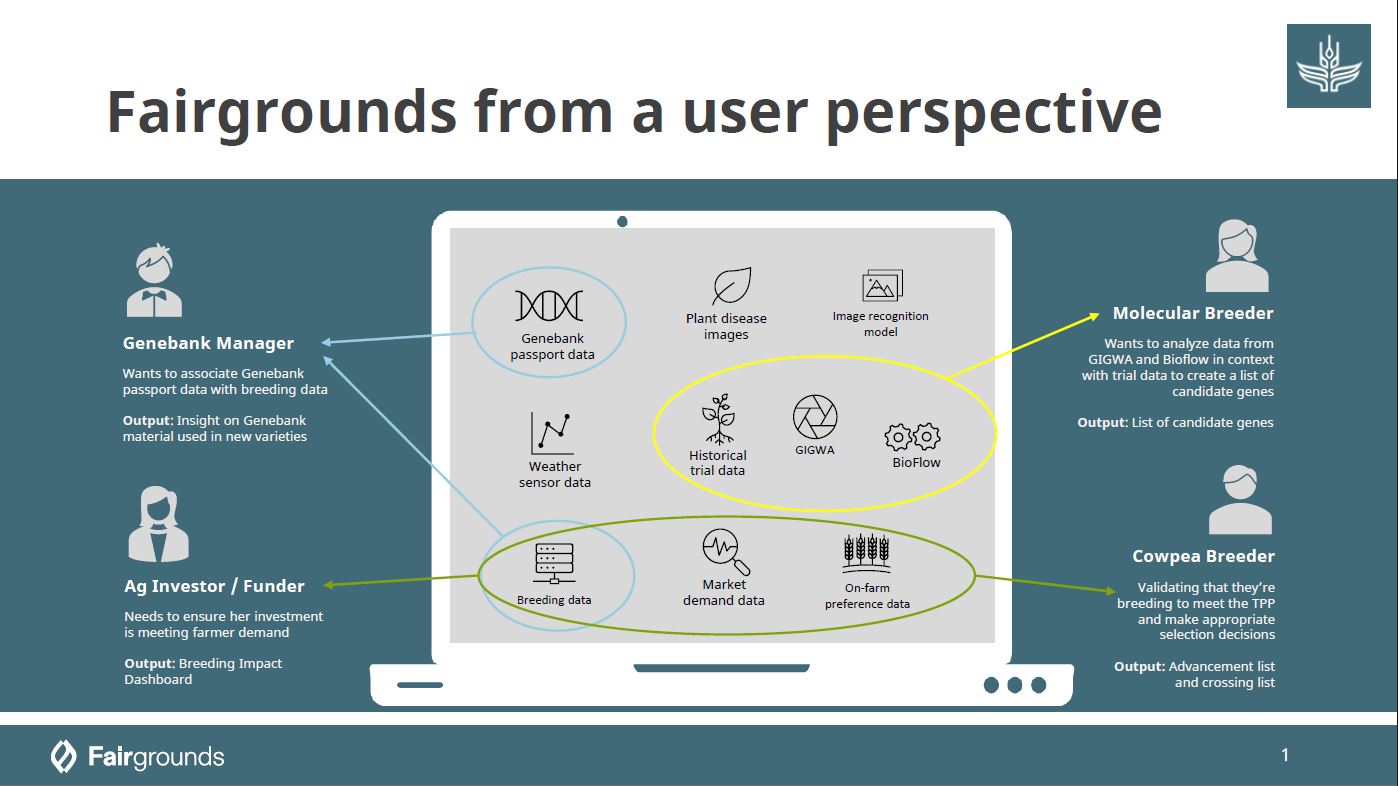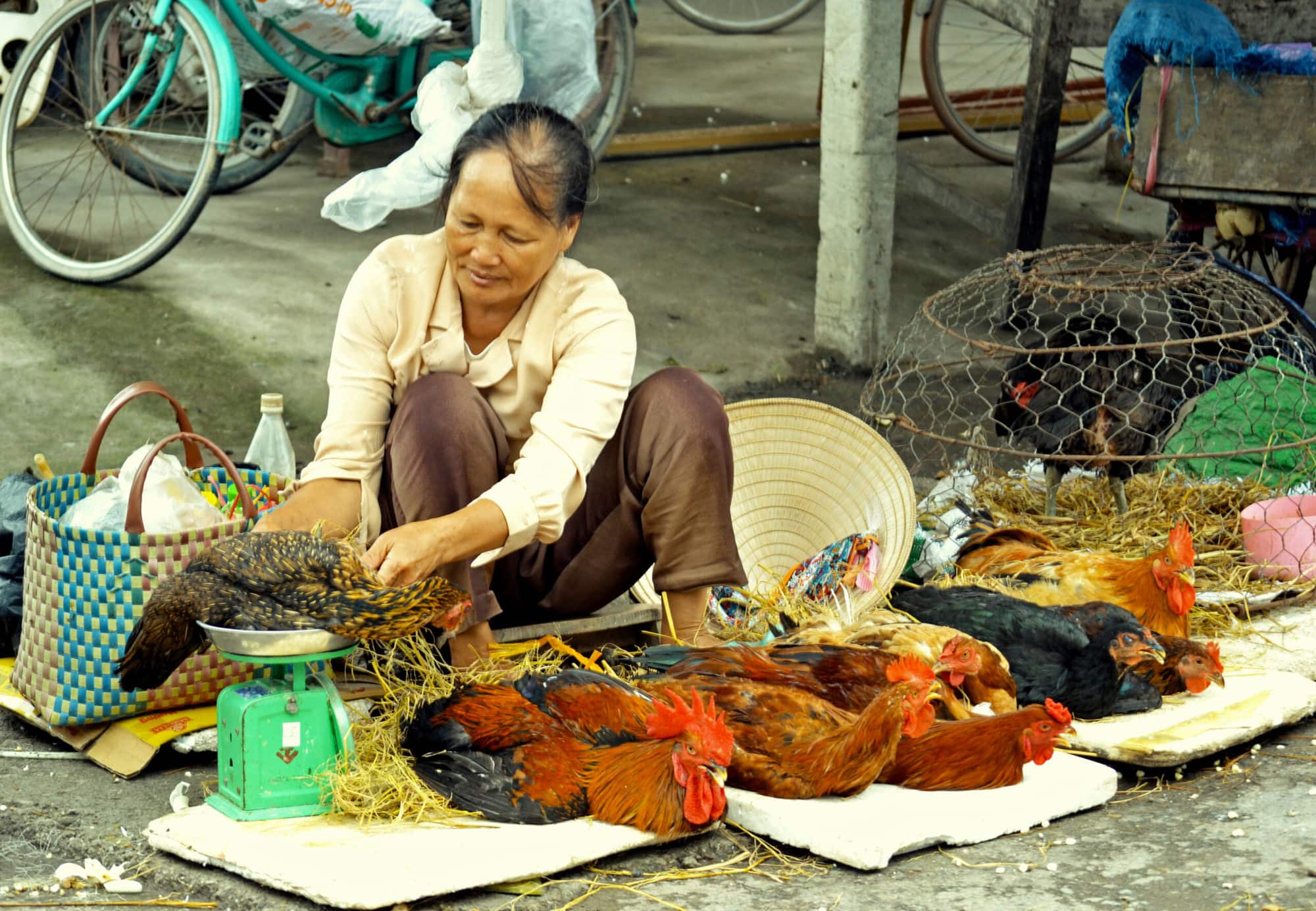How Fairgrounds (previously AgPile) connects data and crop breeders – with early examples
-
From
CGIAR Initiative on Breeding Resources
-
Published on
27.08.25
- Impact Area

In early 2025, CGIAR received a grant from the Gates Foundation to develop AgPile, a FAIR, federated and collaborative data platform that references and organizes access to datasets from CGIAR, its Centers, and partners. The project, led by CGIAR Digital Transformation Accelerator, facilitated by IFPRI, has since been rebranded as Fairgrounds, with an emphasis on FAIR (findable, accessible, interoperable, reusable) data standards, and progress is moving quickly.
The platform is already being piloted with breeding use cases, in collaboration with Breeding Resources, an Area of Work within CGIAR’s Breeding for Tomorrow Science Program.
So, what does this mean for CGIAR and its crop breeders, and how will Fairgrounds support them in practice?
Fairgrounds is a gateway to a new world of agricultural innovation
At its core, Fairgrounds is designed to connect CGIAR data with the world’s research, and vice versa. The project initially focuses on crop breeding use cases for their strategic importances in CGIAR and plans to expand its scope to cover other disciplines in coming years.
Breeders often wait months to access external datasets, slowing down research. With Fairgrounds, breeders will be able to find answers by analyzing existing data across institutions, rather than running new studies, trials, or research.
For example, by comparing past breeding datasets, breeders might identify patterns in disease resistance or yield performance, saving both time and resources while accelerating genetic gains.
Yet, Fairgrounds is not another centralized database. It is a federated ecosystem: data remains at its original location but is made accessible, discoverable, secure, and interoperable. Think of it as a shared online library where you can access books without removing them from their owner’s shelf.
Fairgrounds is also preparing data so that researchers can plug it into AI and machine learning applications straight away. The data is being structured, labelled, and formatted in a way that makes model applications efficient and accurate without heavy additional preprocessing. Alongside the new data structures, a data governance framework for sustainable data management has been developed and endorsed.
The platform is open source, built by scientists for scientists, and breeders who use Fairgrounds data can also use the models it hosts — such as machine learning models for trait prediction — making them a shared global resource. Work is also underway to federate data from the diverse breeding systems used across CGIAR, whether it is Bioflow, or the Enterprise Breeding System (EBS). This supports collaboration and integration across CGIAR Centers, partner institutions, but also other disciplines across CGIAR Research Portfolio.
 Fairgrounds from a user perspective
Fairgrounds from a user perspective
Where does the project stand today?
Fairgrounds is being actively developed on the cloud. For now, it is primarily accessible to pilot users with a data engineering background. A user interface is under development, but datasets can already be searched and accessed by those with the right technical expertise.
Some early use cases are underway: Computer vision modelers working on rice and forages are being onboarded, and some research teams are testing the platform.
Fairgrounds is working to address challenges, such as cost efficiency, as running machine learning models across distributed data can trigger higher data transfer charges. Performance is being improved, as in some cases caching or replicating data will be necessary to ensure smooth use. A federated architecture that protects data privacy while maintaining consistent performance across diverse datasets and tools is also being addressed.
Proof of concept: drone phenotyping with CIAT Pheno-i
One of the earliest demonstrations of Fairgrounds in action is Pheno-i, a drone-based phenotyping software developed by The Alliance of Bioversity and CIAT. Traditionally, breeders collect crop data by hand, a slow, labor-intensive process. With Pheno-i, drones fly over fields, capturing images that are then processed into numeric data on traits like canopy volume, plant height, and growth stage.
This process usually requires experts to manually handle massive image files. But by linking Pheno-i with Fairgrounds, breeders will have the capability to extract select traits from drone-captured images, making breeder-ready data available quickly and easily, like a turnkey service. Through this work with Pheno-i, Fairgrounds accomplished the objectives established for its proof of concept.
The potential is huge.
- For disease screening, drones can scan over 10,000 lines to identify those resistant to white leaf virus or blast, allowing breeders to discard non-resistant lines, thus accelerating genetic gains.
- In rice fields, drone data can predict biomass production under different scenarios, helping breeders understand how varieties perform across environments.
- Though developed for beans, Pheno-i can be applied across crops, including cassava, banana, potato, rice, forage legumes, grasses, and wheat.
For breeders in low-capacity settings, for instance, those without advanced data processing resources, Fairgrounds will level the playing field. Instead of struggling to translate raw drone images into usable data, breeders could access automated pipelines that handle the process for them.
Fairgrounds and breeders’ shared future
Fairgrounds is still in its early stages, but it can be summarised as follows: a federated, open, and intelligent platform that puts powerful data and AI models directly in the hands of researchers. By making data accessible, interoperable, and actionable, Fairgrounds has the potential to accelerate crop improvement worldwide. And this is just the beginning: s more datasets and tools are onboarded, Fairgrounds will continue to expand its capacity, turning data into a powerful driver of innovation across CGIAR and beyond.
Resources:
- Fairgrounds webpage
- CGIAR secures a grant to develop AgPile, a federated platform for global agricultural data integration
- Contact Fairgrounds: Jawoo Koo, Program Lead, j.koo@cgiar.org
- Learn more about Bioflow, CGIAR Breeding Analytics Pipeline and the Enterprise Breeding System (EBS)
- Learn more about Pheno-i:
- Selvaraj, M.G., Valderrama, M., Guzman, D. et al. Machine learning for high-throughput field phenotyping and image processing provides insight into the association of above and below-ground traits in cassava (Manihot esculenta Crantz). Plant Methods 16, 87 (2020).
- CIAT website: Phenomics Platform
- Video: CIAT Pheno-i, Image Analysis Software Tool
***
Main image: Demonstrating the use of a mobile phone app in a field, Nepal. Credit: Photo by C. De Bode/CGIAR. Written by Julie Puech. This work contributes to CGIAR Breeding for Tomorrow (B4T) Science Program through its Breeding Resources Area of Work.
Related news
-

Reinventing Kenya’s Snack Future with Dryland Grains
International Crops Research Institute for the Semi-Arid Tropics (ICRISAT)21.11.25-
Nutrition
-
Poverty reduction, livelihoods & jobs
Faces of Impact - Video Feature Story On a quiet backstreet in Mihango, Kenya, the…
Read more -
-

Australia partners with International Livestock Research Institute to upskill researchers from Africa and Asia
International Livestock Research Institute (ILRI)13.11.25-
Food security
-
Poverty reduction, livelihoods & jobs
Australia has joined forces with the International Livestock Research Institute (ILRI) to support th…
Read more -
-

A decade of academic and research partnership advances One Health in Vietnam
International Livestock Research Institute (ILRI)13.11.25-
Health
In northern Vietnam, Thai Nguyen province has become one of the most active hubs for…
Read more -
